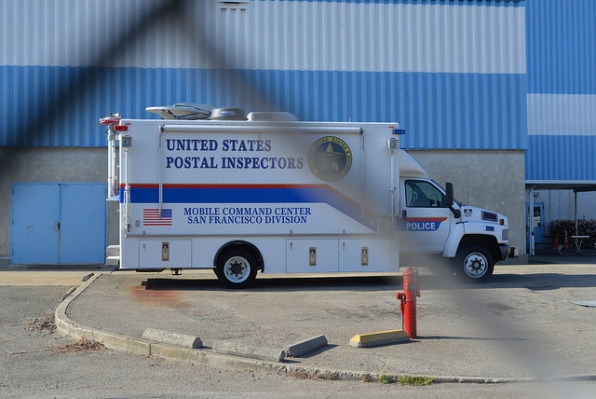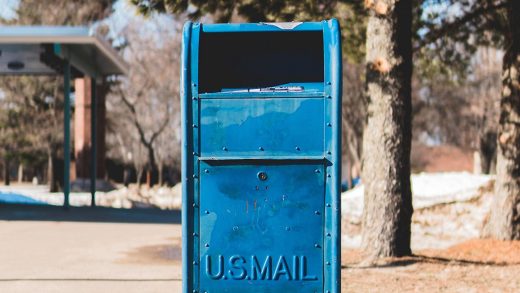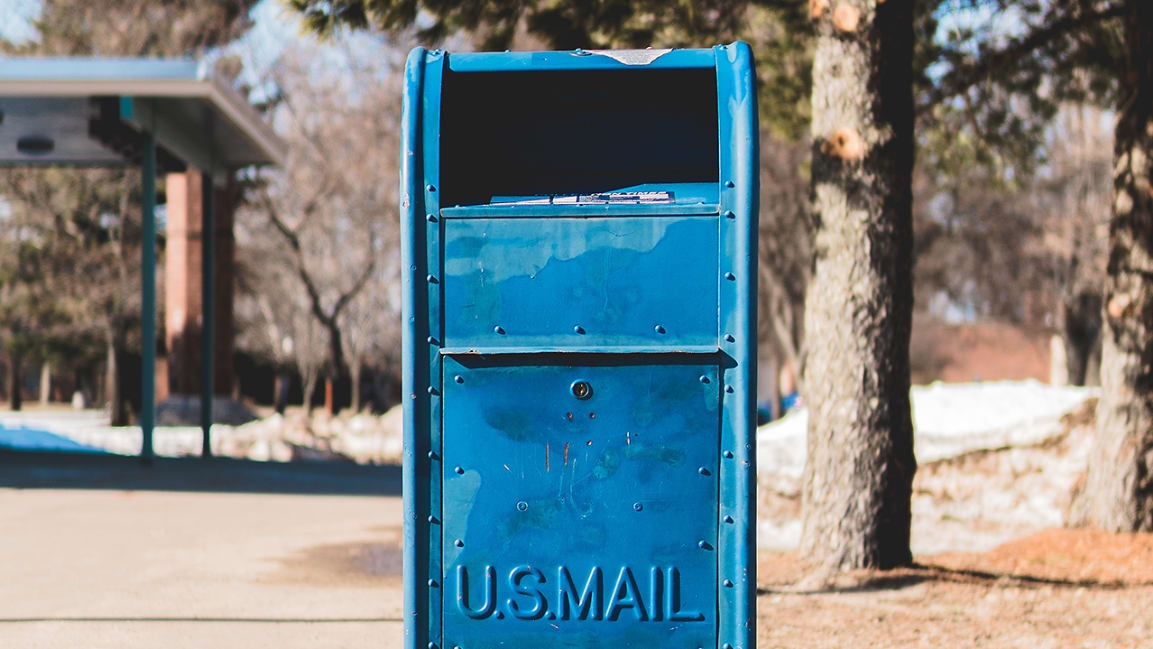Suspicious packages spotlight vast mail surveillance system
As law enforcement investigates possible mail bombs sent to prominent Democratic Party figures and liberal activists, the tools available at their disposal include digital images and delivery metadata commonly associated with mail sent in the United States.
The U.S. Postal Service regularly photographs the front and back of every piece of U.S. mail, or about 150 billion parcels, envelopes, and postcards every year. A longstanding practice known as the “mail cover” program enables law enforcement to obtain address information and images of the outsides of mail as part of an investigation without the need for a warrant through the Postal Inspection Service, the U.S. Postal Service’s policing arm.
Photos of the bomb and package sent to CNN pic.twitter.com/nBq3ArtChJ
— Jim Acosta (@Acosta) October 24, 2018
According to a report from CBS News, authorities are currently using “data analytics” to spot similar packages to those identified as containing bombs. Images of packages shared with the press show a common return address, using the misspelled name of Representative and former Democratic National Committee chair Debbie Wasserman Schultz.
The Postal Inspection Service doesn’t generally comment on its investigative techniques. The agency referred questions from Fast Company to the Federal Bureau of Investigation, the lead agency on the case, which declined to comment, citing an ongoing investigation.
“Insufficient controls”
As part of the mail cover program, mail is routinely digitally photographed as part of the sorting process and even available for recipients to digitally preview in some areas. Apart from threats like bombs, the department says its main focus is on mail theft, fraud, and narcotics cases.

Because a mail cover involves reading only information on the outside of the envelope or package, courts have not ruled it a violation of the Fourth Amendment. But that hasn’t stilled concerns about privacy and abuse.
For decades, the relatively obscure program has come under criticism for its lack of protections, for allowing data to be shared in broader cases than postal regulations allow, and for operating largely outside of public view. Critics have also warned that extensive surveillance of someone’s mail, especially combined with other surveillance, could create privacy violations.
After an audit, the Postal Service inspector general determined in 2014 that the Inspection Service did not have “sufficient controls” in place to ensure that its employees followed the agency’s policies in handling national security mail covers.
“Insufficient controls over the mail covers program could hinder the Postal Inspection Service’s ability to conduct effective investigations, lead to public concerns over privacy of mail, and harm the Postal Service’s brand,” it warned in a report.
Mail covers drew fire in the 1970s as part of government surveillance of groups deemed subversive, after a 15-year-old girl was apparently put under surveillance for writing a letter to a radical group. She had reportedly actually intended to contact a similarly named organization as part of a homework assignment.
But in the ongoing mail bomb case, use of mail covers is probably justified and in line with regulations, says Steven Morrison, an assistant professor at the University of North Dakota, who was the author of a 2015 report from the National Association of Criminal Defense Lawyers calling for greater oversight of the program.
“This is going to have no difficulty in satisfying any regulation,” he says. “Clearly this is a good use of the mail cover program.”
Unbeknownst to most citizens
Beyond names and addresses, exactly what data about mail is available and how it can be accessed and searched through the program isn’t publicly known.
While an agency spokesperson declined to comment on its techniques—”in order to prevent attempts to compromise the effectiveness of our investigative methods”—they say in an email that the agency had a “targeted strategy of specialized technology screening protocols and employee training” in place, and add that postal inspectors have various tools at their disposal when potentially dangerous mail is identified.
“The Postal Inspection Service has organized response teams nationwide for investigating suspicious parcels through our Dangerous Mail Investigations (DMI) Program,” the spokesperson writes. “DMI Inspectors are trained to recognize the common characteristics of suspicious mail and are highly proficient in the use of state-of-the-art equipment to include portable X-ray machines.”
A separate system is used by the USPS intended to track mail that may pose a biological or chemical threat was established after postal anthrax attacks killed five people in 2001. The agency didn’t publicly acknowledge its existence until 2013, when the FBI described its investigation into ricin-laced letters sent to President Barack Obama and New York City mayor Michael Bloomberg. (The FBI said that the program was used to narrow its investigation to the actress Shannon Richardson, who was sentenced to 18 years in prison.)

[Photo: Paul Sullivan]
Privacy concerns generally persist around the mail covers program. Morrison’s report called for more restrictions and oversight, and the audit report issued in 2014 by the Postal Service’s Office of the Inspector General helped make the case: the Inspection Service, which fulfilled about 49,000 such requests in its 2013 fiscal year—a dramatic increase over previous years—frequently didn’t follow the existing guidelines designed to preserve the privacy of Americans’ mail, the audit found.
Some mail covers were authorized by officials who legally didn’t have the authority to sign off, and about 13% of the audited mail covers lacked documentation showing they were justified under the “reasonable grounds” standard. Of about 6,000 requests received from outside agencies in that year, the Inspection Service rejected only 10, the OIG’s Deputy Inspector General Tammy Whitcomb told Congress in November 2014.
A law review article published last year by then-Vanderbilt University law student Julie Lynn Rooney also suggested the program be subject to greater constitutional scrutiny.
“Unbeknownst to most citizens, the government now photographs and records the exterior of each of the roughly 160 billion mail parcels delivered by the USPS every year,” wrote Rooney. “Still, despite its ability to allow governmental authorities to uncover a startlingly accurate picture of citizens’ daily lives, the long-abused mail covers program continues to be implemented without any judicial oversight.”
The USPS says that out of some 150 billion pieces of mail it handles annually, its investigations capture about 16 “bombs” a year on average, according to NPR News. In March, when a wave of deadly package bombings terrorized Austin, the Statesman newspaper in that city reported that of four bombing cases in the prior 18 months that caused injury or death, three led to arrests. In the Austin case, suspected bomber Mark Anthony Conditt killed himself with a bomb as police closed in.
Fast Company , Read Full Story
(20)



